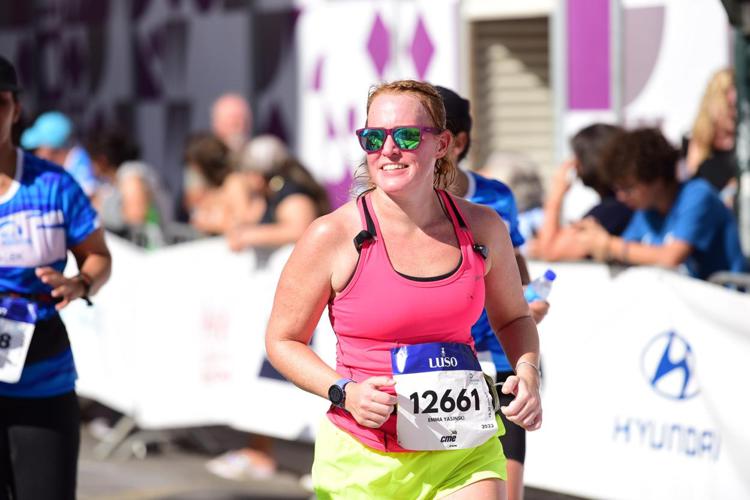I love to exercise. And it’s not just because I write for MedShadow, where I’m frequently extolling the benefits of a lifestyle based around more physical activity, less stress, and a solid foundation of fruits, vegetables, and omega-3s.
I’ve always been this way.
As a member of a very average high school swim team, I decided that swimming for two hours a day, six days a week wasn’t enough. I petitioned my coach to add morning practices two days a week. Sadly, she declined, to the relief of many of my teammates who did not share my enthusiasm for the idea of waking up at 5 a.m. in the dead of winter to jump in the pool.
As an adult, I still manage to fit some form of exercise in three to five times a week. The habit has probably gone a long way toward helping me manage my polycystic ovary syndrome (PCOS), but more than that, it plays a major role in my mental health. Whenever I start to feel a dip in energy and mood, a feeling that the stress of life is becoming more overwhelming than it was before, I ask myself “have I exercised in the last few days?” Typically, the answer is “no,” and even 20 minutes of walking, running, biking, yoga, weightlifting, or swimming—I like variety!—is all it takes to get my spirits up.
Still, I struggle to stay motivated unless I have a race on the calendar. My favorite type of race to participate in is triathlons (why be great at one sport when you can be mediocre at three?), but in July 2023, I signed up for a half marathon which would take place in Portugal while I was on vacation in October. (It’s a lot easier to fly overseas with running shoes than it is with a road bike).
Almost immediately after signing up, I started training, and during one long, hot Sunday morning run, while watching the sunrise, I felt an odd twinge just between the heel and arch on the inside of my right foot.
My body had betrayed me. It was plantar fasciitis, an injury characterized by inflammation along the plantar fascia, tissue that runs along the bottom of your foot connecting the achilles tendon to your toes. It’s common in both runners and walkers, and mine was clearly triggered by adding miles to my running route. This particular injury is well-known to take weeks, at minimum, to heal. Some people struggle with the pain for a year or longer. The prospect of not being able to run for weeks or months was terrifying to me.
I panicked.
And then, I did what I do every day: I did my research.
Ultimately, after trying a variety of science-based fixes, I was able to run the race, though it was not nearly as fast as I’d hoped since I had missed a good chunk of my training plan while resting my foot.
Here’s what I did to get back into (almost) tip-top shape.
NSAIDs, The ‘Quick Fix’ For Plantar Fasciitis That Ultimately Wouldn’t Help Me
A few days after that first twinge, I realized the pain wasn’t subsiding. I started scouring the internet for quick fixes that would let me lace up my running shoes again. I read article after article in running magazines and medical journals, hoping one would finally tell me the secret to healing my foot overnight.
Inflammation plays a role in plantar fasciitis, so I desperately searched for whether taking a non-steroidal anti-inflammatory drug (NSAID) such as ibuprofen before running could prevent it from flaring up again.
Given my position at MedShadow, I am well aware of the myriad dangers of overusing over-the-counter (OTC) painkillers. However, I’d be lying if I said thoughts like I’ll only take it on days when I run!, and I’m only taking a few pills a week, which isn’t anywhere near the maximum dose!, weren’t constantly floating around my head.
These thoughts crashed to a halt when I found an article in Runner’s World detailing how pain medication can affect runners. Not only do the typical risks of OTC pain killers still apply to exercise enthusiasts, but the dehydration that goes along with a long or intense workout can exacerbate some of the risks. Plus, in certain cases, NSAIDs might even worsen post-run inflammation without helping pain, according to a small 2006 study of ultramarathoners.
NSAIDs such as ibuprofen are also associated with a risk of kidney damage, which is why those with kidney disease are often advised to avoid using them. When you’re dehydrated from running, your kidneys may get less blood flow—and therefore limited nutrients—than they typically do. That means taking an NSAID before a run can raise the risk of harming your kidneys.
Also important is the fact that NSAIDs are associated with an increased risk of blood clots, especially in women who use hormonal contraceptives,which is a common treatment not just to prevent pregnancy but also to treat the aforementioned PCOS. (Of note: researchers found the highest risk of blood clots with diclofenac tablets, which are only available with a prescription.)
Tylenol (acetaminophen) is not an NSAID, but it wasn’t going to help me much, either. Acetaminophen works by blocking pain signals to your brain. While exercise and dehydration aren’t known to worsen any side effects of the drug,since it doesn’t target inflammation, it wouldn’t contribute to any plantar fasciitis healing. Additionally, dehydrated or not, using it regularly raises your risk of liver injury.
So, as impatient as I was, it seemed like I was stuck with pharma-free strategies. In addition to eating an anti-inflammatory Mediterranean-style diet (the lunch I’m eating as I write this, a grain salad with farro, kale, beets, chickpeas, pesto and garlic-herb goat cheese, is typical of what I ate during my healing), I used the following time-tested techniques.
What Actually Helped for Plantar Fasciitis: Stretching, Massages,Foot Splints, and Strength Training
The plantar fascia is connected to your calf, and research has found that most people with plantar fasciitis have tight calves. Physical therapists and orthopedists emphasize that stretching your calf muscles multiple times a day can help loosen this area, and relieve some of the pressure on your plantar fascia.
We can also stretch the plantar fascia itself using our hands to push our toes back toward our ankles.
I started stretching my calves a minimum of three times a day. I’d stand up from my desk, put my hands against the wall and step one foot slightly backward, pushing that heel toward the ground. I’d hold for 10 seconds or so, then bend my knee slightly so I’d feel the stretch a little lower in the muscle for another 10 seconds. Then I’d switch sides.
Bedtime Boots or Night Splints
When we sleep, our blankets often push our feet down, so we point our toes as if we are swimming. This shortens the plantar fascia. For people with plantar fasciitis, this can mean the fascia starts to heal in this downward position. When you place your foot on the ground in the morning, it stretches the fascia and causes painful microtears.
Night splints are thought to keep your foot in a neutral, flexed position while you rest or sleep to help it heal while still stretched out, limiting pain (though clinical trial results have been mixed). Because it wasn’t always easy to sleep in, I wore mine while writing all day.
Supportive Shoes
One of the biggest risks for developing plantar fasciitis is worn out or inappropriate, unsupportive footwear. The first thing I did when I noticed the pain was to trade my flat flip-flops and high heels for sneakers and shoes with arch support, which immediately reduced my pain between runs. I also started using insoles in my running shoes to help support my arches.
Massage
Using your thumbs to dig into the arch of your foot can also help reduce pain from plantar fasciitis. Experts recommend starting closer to your toes, where you don’t feel pain, and working your way down toward your heel if you can tolerate it. You can also place your foot on top of a tennis or lacrosse ball and roll it to massage the area. I did try these options, though it wasn’t obvious to me whether or not they actually helped.
Strength Training
After about two weeks, my foot could handle standing for longer periods of time, but I couldn’t run very far. I started strength training, using free weights and moves like lunges, squats and clamshells. I also incorporated some upper body moves to balance out the workout.
When October rolled around, I managed to finish the race, slowly but steadily. I’ve continued the strength training, and even used that half marathon as a starting point to train for my first ever half ironman triathlon, which included a 1.2 mile swim, 56 mile bike and a half marathon (13.1 mile) run, which I proudly finished in May 2024. I credit my short-term recovery from plantar fasciitis to the boot and calf stretching techniques, and staying injury-free to a combination of luck and consistent strength training.






